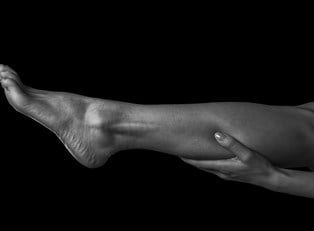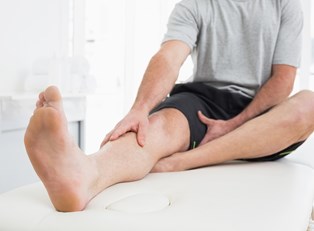Restless leg syndrome (RLS) is a condition that affects the chemicals in the brain and leads to uncomfortable sensations in the legs, along with an overwhelming urge to move your legs in order to temporarily relieve the discomfort.
If it is properly diagnosed, this condition is treatable, though there is no definitive cure as of yet. Treatment can range from lifestyle changes to a medication regiment; it will depend on the type and severity of your symptoms. If your restless leg symptoms are caused by an underlying condition, such as an iron deficiency, then treatment for this condition will be issued first and may partially or completely relieve your symptoms. Work with your doctor to decide what is the best treatment plan for your personal symptoms.
Lifestyle Changes
Initially, treatment will focus on making changes in your daily routine in order to relieve your symptoms without medical treatment. This is because many of the medications prescribed for restless leg syndrome have dangerous or addictive side effects, especially for children. Some things that your doctor might recommend for you to try at first include:
- Exercise: Stretching, walking, and exercising regularly can help reduce RLS symptoms. However, it is important to not overdo it by exercising too often or too late in the day, as this can actually make things worse.
- Massage therapy: Regularly massaging the muscles in your legs can be very beneficial because it will relax them and prevent symptoms from flaring up at night.
- Hot and cold therapy: Alternating between applying hot and cold compresses on your legs can help numb the sensations and therefore dull the symptoms of restless leg syndrome.
- Weight loss: If you are overweight or obese, this can worsen the symptoms of restless leg syndrome. Losing weight may improve your condition.
- Avoid smoking and caffeine: Both smoking and caffeine have been shown to aggravate the symptoms of RLS. Avoiding these as much as possible can help them.
- Healthy diet: Eating balanced meals every day can help promote a healthy sleeping pattern and reduce the symptoms of RLS.
Medications
If lifestyle changes aren’t enough to relieve your RLS symptoms, then your doctor may decide to try a different approach that involves medication. There are several that have been approved to treat restless leg syndrome, and these include:
- Dopamine enhancers: Requip (ropinirole), Neupro (rotigotine), and Mirapex (pramipexole) are all drugs that have been approaved to treat RLS by affecting the level of dopamine in your brain, which will in turn reduce the motion in your legs.
- Calcium channel blockers: Neurontin (gabapentin) and Lyrica (pregabalin) work by affecting the levels of calcium in your body.
- Opioids: If your symptoms are severe, then certain narcotic medications may be prescribed to help dull them. These include codeine, oxycodone, and hydrocodone. Even though these medications might be effective at relieving symptoms, it is important to note that they are also highly addictive substances and should only be used in moderation.
- Muscle relaxants and sleep medications: There is also a class of medications called benzodiazepines, which work by enhancing sleep at night. However, these medications will not relieve the symptoms of RLS, and they may cause drowsiness during the daytime. These include Klonopin (clonazepam), Restoril (temazepam), and Ambien (zolpidem).



